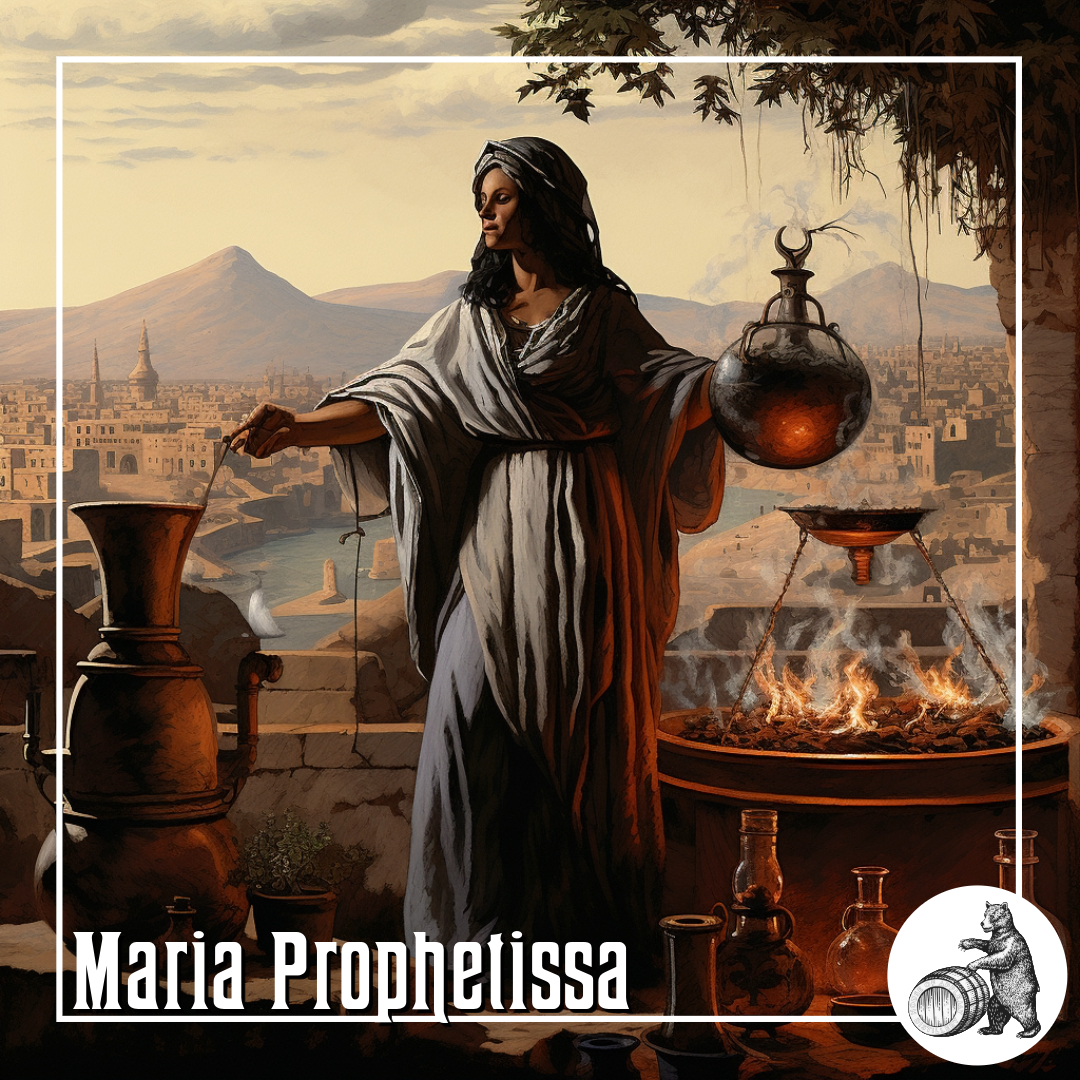Maria Prophetissa
Distillation Pioneer and Enduring Influence on Chemistry
Maria Prophetessa, a prominent figure in alchemy during the 1st to 3rd century A.D. in Alexandria, Egypt, left an indelible mark on the field, particularly in distillation. Credited with inventing significant apparatus like the tribikos, her contributions extended beyond her time, influencing later generations of alchemists and laying the groundwork for future chemists.
Maria Prophetissa, also known as Maria the Jewess, Maria the Hebrew, or “daughter of Plato,” lived during the 1st to 3rd century A.D. in the vibrant city of Alexandria, Egypt, emerging as a pivotal figure in the realm of Hellenistic Alchemy. Zosimos from Panopolis, a distinguished ancient Greek alchemist and Gnostic mystic residing in the 3rd to 4th century A.D., attributed to Maria the invention of various ovens and vessels tailored for the intricate tasks of cooking and distilling alchemical elements.
Among Maria Prophetissa’s noteworthy contributions was the creation of the tribikos, a groundbreaking distillation apparatus. Zosimos accentuated her pivotal role as the originator of this equipment, characterized by three receivers and famously known as the tribikos. Alembics with two receivers (dibikos) and three receivers (tribikos) became integral components of her innovative designs. Early representations of alembics also found their way into the works of contemporaries like Cleopatra the Alchemist and Synesius.
Despite the absence of her own written manuscripts, Maria Prophetissa garnered recognition as one of the most influential alchemists in history. Her tribikos, a meticulously designed distillation apparatus, featured interconnected clay pots linked by copper pipes. In this intricate setup, the lower vessel contained the liquid destined for distillation, while vapors ascended into an overlying clay pot. The resulting condensate then elegantly dripped through three copper tubes into three distinct glass vessels. Zosimos documented Maria’s guidance, noting her recommendation that the copper or bronze used for the tubes should possess a thickness at least equal to that of a frying pan to achieve optimal results.
Maria Prophetissa occupies a significant place in distilling history, recognized as one of the earliest distillers chronicled in historical records. Beyond her inventive prowess in alchemical apparatus, her teachings on distillation transcended the practical, delving into philosophical and spiritual realms. She intricately integrated distillation into an allegorical narrative, symbolizing the profound purification and transformation of the soul.
In the symbolic language of alchemy, the distillation process represented the purification of the prima materia—a raw material alchemists sought to transform into the elusive philosopher’s stone. This mystical substance was believed to possess the power to transmute base metals into gold and bestow spiritual enlightenment. Maria Prophetissa’s emphasis on distillation as a symbolic and transformative journey played a pivotal role in integrating spiritual and mystical elements into alchemical practices. According to her philosophy, the alchemical pursuit involved not only the manipulation of physical substances but also a profound inner transformation of the alchemist.
While historical details about Maria Prophetissa remain limited, her enduring impact on the world of alchemy, particularly in the domain of distillation, is indisputable. Her legacy continues to be celebrated by later generations of alchemists and chemists who draw inspiration from her innovative spirit and profound insights.
The Distilling Culture
BLOG
Embark on a global journey, and you’ll find that cultures possess tales that harken back to their ancient beginnings of distillation, brewing, and winemaking.
info@houseofapplejay.com
67 Fowler St, Bldg B, East Ellijay, GA 30540

